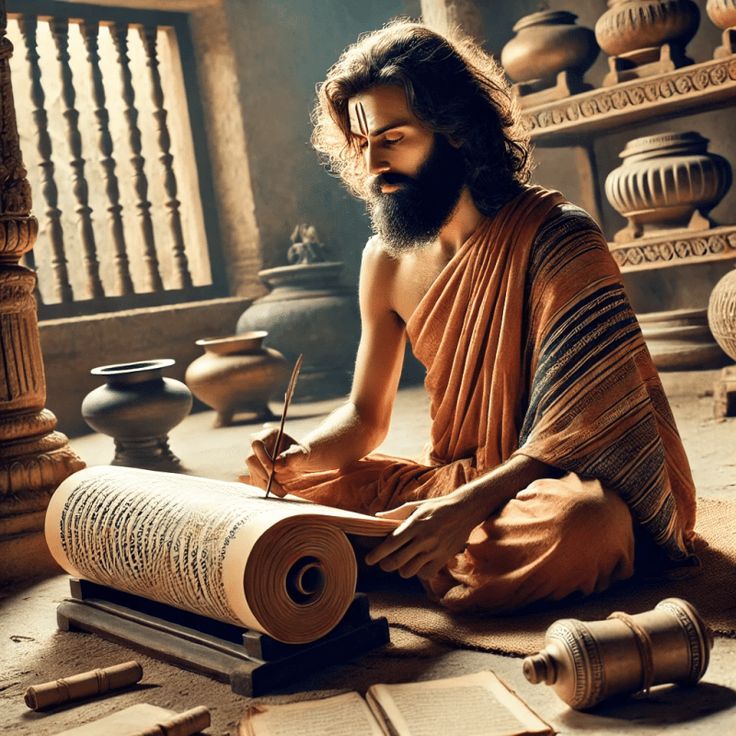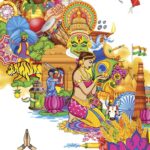Indian Languages: Biography, Daily Life Impact, and Significance
Indian Languages: India, a land of diverse cultures and traditions, is also home to an incredible linguistic heritage. With over 1,600 spoken languages and more than 2,000 dialects, Indian languages play a crucial role in shaping the country’s identity. From the ancient languages of Sanskrit to the modern tongues spoken across the country, Indian languages have a profound impact on daily life, communication, and the nation’s cultural fabric. This article delves into the history, significance, and role of Indian languages in society.
History of Indian Languages
The history of Indian languages spans thousands of years, with roots deeply embedded in ancient traditions. Sanskrit, one of the oldest and most important classical languages, holds a central place in Indian culture. It is the language of many ancient texts such as the Vedas, Upanishads, Mahabharata, and Ramayana. Sanskrit also influenced many modern languages in India.
Over time, regional languages began to flourish, influenced by cultural exchanges, invasions, and migration. Languages such as Tamil, Telugu, Bengali, Hindi, Punjabi, and Gujarati have rich literary traditions and are spoken by millions across India.
The introduction of Persian and Arabic through the Mughal Empire and the later influence of English through British colonial rule also shaped the linguistic landscape of India. Today, Hindi, written in the Devanagari script, is the official language of India, while English is widely used for official and business purposes.
Biography of Key Figures in Indian Language History
- Rabindranath Tagore
Rabindranath Tagore, a polymath, poet, and philosopher, played an essential role in the development of modern Bengali literature. Tagore’s contributions to Indian languages, particularly through his poetic works and songs, have made a lasting impact. He was the first non-European to win the Nobel Prize in Literature in 1913 for his work Gitanjali, written in Bengali. - Mahatma Gandhi
Gandhi, known for his role in India’s independence movement, was also a champion of the use of local languages. He believed in the importance of promoting regional languages and advocated for the use of Hindi as a unifying language. His writings and speeches, often delivered in Hindi, had a profound influence on the masses. - C. N. Annadurai
C. N. Annadurai, a prominent Tamil politician and writer, was instrumental in promoting the Tamil language and culture. As the Chief Minister of Tamil Nadu, Annadurai worked to make Tamil an official language of the state, and his speeches advocating for linguistic pride continue to resonate today.
India is a linguistically diverse country with hundreds of languages spoken across its regions. The Constitution of India recognizes 22 officially scheduled languages, but there are many more languages and dialects in use. Below is a list of the 22 officially recognized languages along with some other major languages spoken in India:
22 Scheduled Languages of India (Official)
- Assamese – Spoken in Assam.
- Bengali – Spoken in West Bengal, Tripura, and parts of Assam.
- Bodo – Spoken in Assam.
- Dogri – Spoken in Jammu and Kashmir.
- Gujarati – Spoken in Gujarat.
- Hindi – Widely spoken in Northern and Central India.
- Kannada – Spoken in Karnataka.
- Kashmiri – Spoken in Jammu and Kashmir.
- Konkani – Spoken in Goa, Karnataka, and Maharashtra.
- Maithili – Spoken in Bihar and Jharkhand.
- Malayalam – Spoken in Kerala and Lakshadweep.
- Manipuri (Meitei) – Spoken in Manipur.
- Marathi – Spoken in Maharashtra.
- Nepali – Spoken in Sikkim and parts of West Bengal.
- Odia (Oriya) – Spoken in Odisha.
- Punjabi – Spoken in Punjab.
- Sanskrit – Ancient language, used for religious and scholarly purposes.
- Santali – Spoken by tribal communities in Jharkhand, Odisha, and West Bengal.
- Sindhi – Spoken by Sindhi communities across India.
- Tamil – Spoken in Tamil Nadu and Puducherry.
- Telugu – Spoken in Andhra Pradesh and Telangana.
- Urdu – Spoken in Jammu and Kashmir, Telangana, Uttar Pradesh, and other states.
Other Major Languages (Non-Scheduled but Widely Spoken)
- Tulu – Spoken in Karnataka and Kerala.
- Rajasthani – Spoken in Rajasthan.
- Bhili/Bhilodi – Spoken by tribal communities in Western India.
- Gondi – Spoken by Gond tribes in Central India.
- Kurukh (Oraon) – Spoken by tribal communities in Jharkhand, Chhattisgarh, and Odisha.
- Khasi – Spoken in Meghalaya.
- Mizo – Spoken in Mizoram.
- Garhwali – Spoken in Uttarakhand.
- Kumaoni – Spoken in Uttarakhand.
- Kodava – Spoken in Karnataka.
- Saurashtra – Spoken by the Saurashtra community in Tamil Nadu and other regions.
Language Families in India
Indian languages belong to several language families:
- Indo-Aryan – Hindi, Bengali, Gujarati, Marathi, Punjabi, etc.
- Dravidian – Tamil, Telugu, Kannada, Malayalam.
- Tibeto-Burman – Bodo, Manipuri, Mizo, etc.
- Austroasiatic – Santali, Khasi, etc.
- Others – Some languages like Burushaski (spoken in Jammu and Kashmir) are isolates.
Key Facts
- Hindi is the most widely spoken language in India, followed by Bengali and Marathi.
- English is widely used for official and administrative purposes.
- India has no national language; Hindi and English are the official languages of the Union Government.
Daily Life Impact of Indian Languages
In India, language plays an essential role in shaping day-to-day interactions, education, media, and even politics. The linguistic diversity of the country means that communication is often localized, with people using different languages at home, work, or social gatherings. For instance, a person in Tamil Nadu might primarily speak Tamil, while a person in Uttar Pradesh may use Hindi.
The use of regional languages is also important in education. Many students are taught in their mother tongues, which allows for better understanding and retention of knowledge. In rural areas, local dialects play a vital role in connecting people to their culture and heritage.
Moreover, language is a key aspect of Indian cinema, with Bollywood films primarily using Hindi and regional industries such as Kollywood (Tamil), Tollywood (Telugu), and Sandalwood (Kannada) producing films in their respective languages. These films, songs, and television shows have a tremendous impact on society, as they are often seen as a reflection of the cultural nuances of each language.
Importance of Indian Languages in Society
Indian languages are not only tools of communication but also carriers of cultural identity. They encapsulate centuries of tradition, beliefs, and knowledge. Each language has its own literary history and plays an important role in preserving local culture.
For example, Tamil, one of the oldest living languages, has a rich tradition of literature, poetry, and music, which continues to shape the cultural landscape of Tamil Nadu. Similarly, languages like Marathi, Punjabi, and Kannada have contributed significantly to the arts, philosophy, and folklore of their regions.
The diversity of Indian languages also fosters inclusivity and harmony. Although Hindi and English dominate in many parts of the country, India’s multilingualism ensures that people from different regions and communities can continue to maintain their unique identities while also participating in a broader national discourse.
Facts About Indian Languages
- Number of Languages: India is home to over 1,600 languages and 2,000 dialects, making it one of the most linguistically diverse countries in the world.
- Official Languages: Hindi, in the Devanagari script, is the official language of India, along with English for official and administrative purposes.
- Scheduled Languages: The Constitution of India recognizes 22 languages under the Eighth Schedule, including languages like Bengali, Tamil, Telugu, Urdu, Gujarati, Punjabi, and Malayalam.
- Largest Language Family: The Indo-Aryan languages (including Hindi, Bengali, and Punjabi) are the most widely spoken group in India, followed by Dravidian languages (such as Tamil and Telugu).
FAQs About Indian Languages
1. Why are Indian languages so important to the country’s culture?
Indian languages are integral to the preservation of culture, as they carry the wisdom, history, literature, and traditions of various regions. They help maintain the diversity and richness of India’s cultural heritage.
2. How many languages are spoken in India?
India has more than 1,600 languages spoken across its regions, with major languages like Hindi, Bengali, Telugu, Marathi, and Tamil.
3. What is the role of Hindi in India?
Hindi, as the official language of India, plays an important role in uniting people from different linguistic backgrounds. It is widely spoken and used in government, media, and education.
4. How does India’s multilingualism affect daily life?
Multilingualism in India allows for a deep sense of connection to local communities while also facilitating communication on a broader, national level. People often speak multiple languages, depending on their region, family, and social circles.
Conclusion: Wishing the Continued Flourishing of Indian Languages
Indian languages are integral to the nation’s identity and its people’s daily lives. They are not just a means of communication but serve as the foundation for culture, history, and tradition. As India continues to grow and modernize, the preservation and promotion of its languages remain critical in maintaining the country’s rich cultural diversity.










